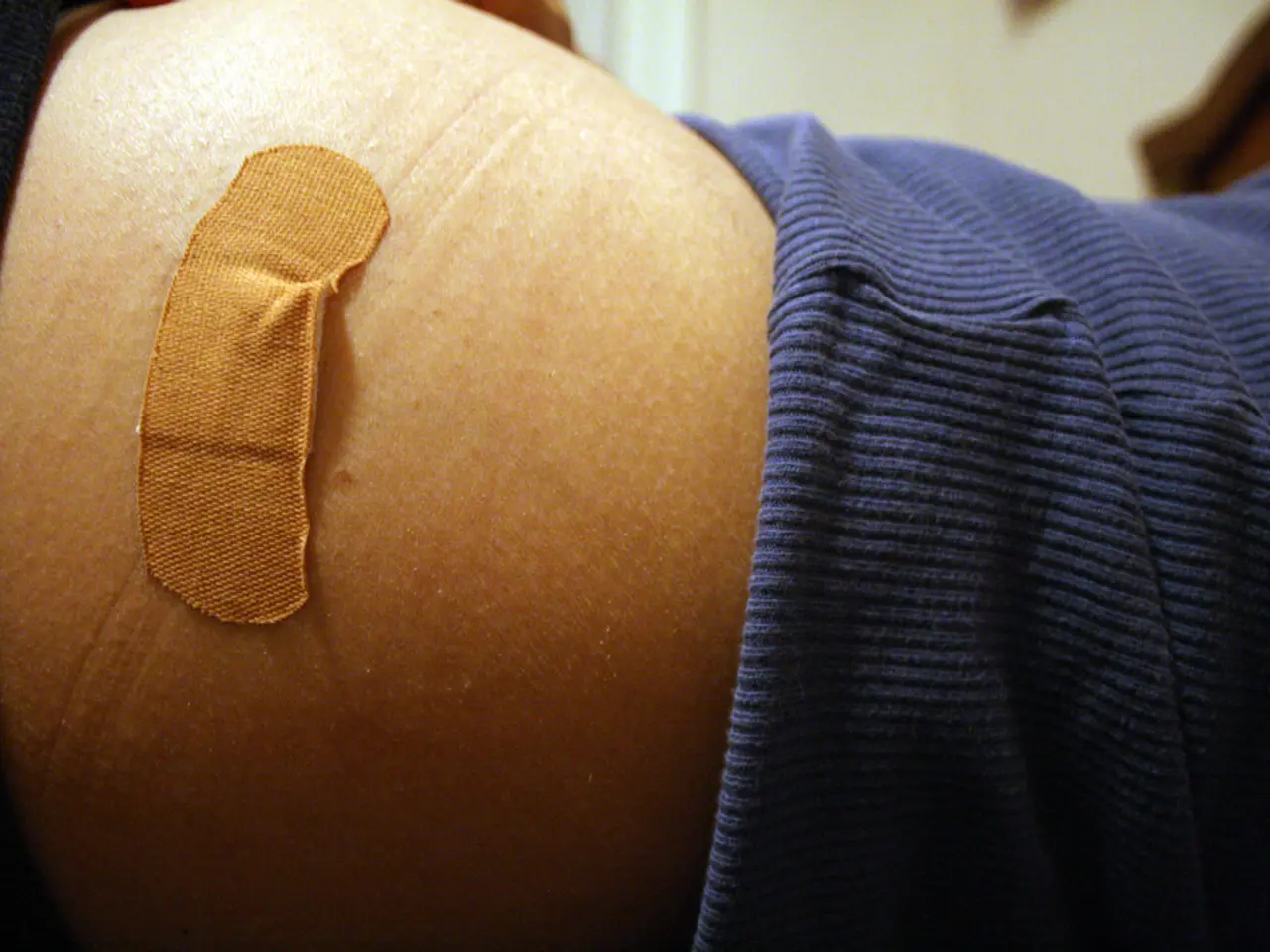Workout routines to alleviate pain in the sacro-iliac (SI) joints
In the human body, the sacroiliac (SI) joints play a crucial role, connecting the spine to the pelvis and acting as shock absorbers for the spine [1]. When these joints become dysfunctional, it can lead to lower back pain. This article explores effective exercises and stretches for SI joint pain relief.
A combination of muscle-strengthening exercises, targeted stretches, and low-impact aerobic activities forms the cornerstone of an effective exercise routine for SI joint pain relief.
Muscle-Strengthening Exercises
Targeted strengthening exercises like the clamshell, bodyweight squats, and step-ups help build muscle support around the SI joint, improving stability and reducing pain [1][3][5]. The lower trunk rotation exercise and the unilateral bridge, also known as a single-leg bridge, are other recommended exercises that strengthen the gluteus maximus [6][7].
The hip abduction on all fours exercise, or the fire hydrant, is another effective exercise for people with SI joint pain [8]. This exercise helps to strengthen the area and alleviate pain.
Gentle Stretching Routines
Gentle stretching routines that lengthen pelvic, hip, buttock, and groin muscles can decrease tension around the SI joint and increase flexibility [3][4]. Examples of such stretches include lying knee drops and leg lifts [4].
Core Strengthening Exercises
Core strengthening exercises support proper posture and spinal alignment, which further stabilizes the SI joint and minimizes abnormal strain [3]. The bridge exercise is a recommended core strengthening exercise for people with SI joint pain [7].
Low-Impact Aerobic Activities
Low-impact aerobic activities such as walking, swimming, cycling, or using an elliptical are beneficial for joint lubrication and maintaining mobility without excessive joint loading [1].
Additional Management Techniques
Additional management techniques often recommended include rest, ice or heat therapy, manual manipulation, and physical therapy modalities like electrical muscle stimulation and ultrasound to reduce inflammation and improve function [2][3].
It is essential to perform these exercises with proper technique and ideally under professional guidance to avoid aggravating symptoms. Patients are advised to stop if pain worsens and consult healthcare providers for personalized programs especially if symptoms persist or are severe [1][3].
Some people may benefit from wearing surgical girdles and braces to support the SI joints and a person's trunk [10]. Switching positions, standing up, stretching, and walking around regularly can also help reduce lower back pain caused by SI joint dysfunction [11].
Doctors recognize that exercises are extremely effective for managing SI joint pain, but remind people that the results are not immediate [12]. Tightness in the muscles around the SI joints can cause lower back pain, and stretching these muscles may bring relief [13].
Placing a small pillow or rolled-up towel in the small of the back while sitting can help support the lower back [9]. Sleeping curled up in the fetal position on one side may relieve pressure on the back and help manage lower back pain caused by SI joint dysfunction [14].
In conclusion, a well-rounded exercise routine that includes muscle-strengthening exercises, targeted stretches, and low-impact aerobic activities is crucial for managing SI joint pain. It is always advisable to consult a healthcare professional for personalized guidance and to ensure proper technique.
- Sacroiliac joint dysfunction, often leading to lower back pain, can be alleviated through a routine that combines muscle-strengthening exercises, gentle stretching, and low-impact aerobic activities [1].
- The clamshell, bodyweight squats, step-ups, lower trunk rotation exercise, unilateral bridge, hip abduction on all fours (fire hydrant), and bridge exercise are muscle-strengthening exercises recommended for SI joint pain relief [1][3][5][6][7][8].
- Gentle pelvic, hip, buttock, and groin stretches can help decrease tension around the SI joint and increase flexibility, with examples being lying knee drops and leg lifts [3][4].
- Core strengthening exercises, such as the bridge exercise, support proper posture and spinal alignment, further stabilizing the SI joint and minimizing abnormal strain [3][7].
- Low-impact aerobic activities like walking, swimming, cycling, or using an elliptical are beneficial for joint lubrication and maintaining mobility without excessive joint loading [1].
- In addition to exercises, rest, ice or heat therapy, manual manipulation, and physical therapy modalities like electrical muscle stimulation and ultrasound are often recommended for managing SI joint pain [2][3].
- Wearing surgical girdles and braces may help support SI joints, while regularly switching positions, standing up, stretching, and walking around can also provide relief [10][11].
- Doctors recognize the effectiveness of exercises for managing SI joint pain, but remind that results may not be immediate, and tight muscles around the SI joints may require stretching to bring relief [12][13].




